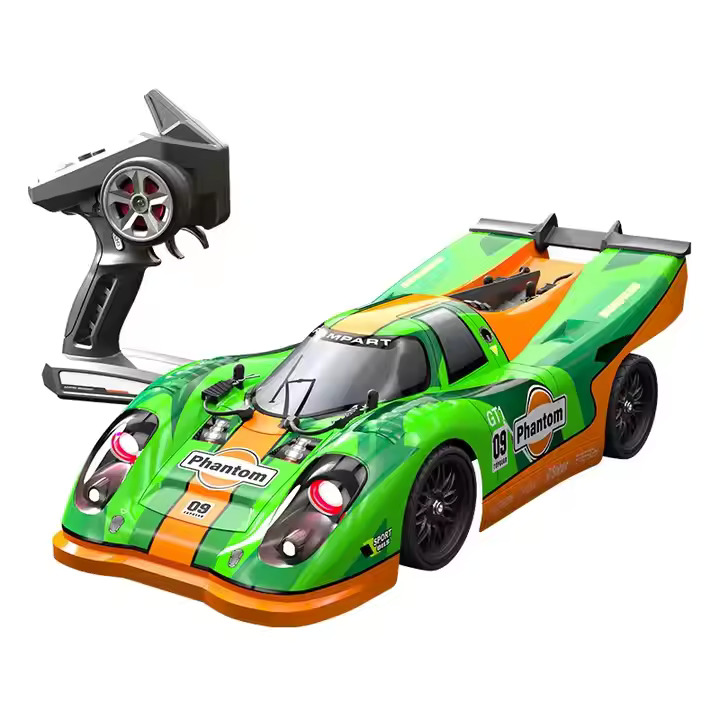
Thinking about buying your first RC (Radio-Controlled) car? Whether you’re into speed racing, drifting around corners, or just want a fun new hobby, entering the RC world is both thrilling and rewarding. But with so many models, styles, and features to choose from, picking the right RC car can feel overwhelming.
Don’t worry — this guide will walk you through everything you need to know before you buy your first RC car.
1. Decide How You Want to Use It
First things first: What kind of driving experience are you looking for?
- On-Road Cars: Great for smooth surfaces like pavement or concrete. These cars are made for speed and handling.
- Off-Road Cars: Designed for dirt, grass, gravel, and more. Includes buggies, trucks, and truggies that can handle rough terrain.
If you’re just starting out and unsure where you’ll be driving, an off-road RC car offers more flexibility and fun.
2. Choose Between Electric or Nitro
RC cars are powered by either electric motors or nitro (gas) engines.
- Electric (Battery-Powered): Quiet, clean, easy to use, and beginner-friendly. Great for learning the basics.
- Nitro (Fuel-Powered): Louder, faster, and more realistic with engine tuning — but also more complex and high-maintenance.
Recommendation: Go electric for your first car. It’s easier to handle, especially if you’re new to the hobby.
3. 2WD vs. 4WD: What’s the Difference?
- 2WD (Two-Wheel Drive): Generally cheaper and easier to maintain, but less traction.
- 4WD (Four-Wheel Drive): Better control, acceleration, and performance — especially on off-road terrain.
If you’re driving on loose surfaces or want maximum control, 4WD is a better choice for beginners.
4. RTR vs. Kit Builds
You’ll come across two main types of RC car options:
- RTR (Ready-to-Run): Pre-assembled, often includes everything you need to start driving. Perfect for beginners.
- Build Kits: Require assembly and often additional parts like batteries or electronics. Ideal for hobbyists who enjoy customizing.
Tip: Start with an RTR car. You can always upgrade or customize it later.
5. Stick with Trusted Brands
Buying from reputable RC brands ensures quality, parts availability, and solid customer support. Here are a few beginner-friendly options:
- Traxxas – Known for durability and beginner-ready RTR models.
- Tamiya – Offers classic models and build kits for enthusiasts.
- Arrma – Makes high-performance electric cars for all levels.
- Redcat Racing – Affordable RC cars great for entry-level fun.
6. Set a Realistic Budget
Your total cost will depend on your setup. Here’s a rough guide:
- Entry-Level RC Car: $100–$200
- Mid-Range RC Car: $200–$400
- High-End/Competitive Cars: $400+
Don’t forget to account for extra batteries, a charger, spare parts, and tools.
7. Essential Accessories You’ll Need
To enjoy your RC car fully, make sure you also get:
- Battery and Charger (if not included)
- Spare parts like tires, gears, or suspension arms
- Basic tools for adjustments and repairs
- Optional: A car stand, extra tires, or a carrying case
8. Where to Buy Your First RC Car
You can purchase RC cars from:
- Local hobby shops – Great for personalized advice and local support
- Online retailers – Offer wide selection and competitive pricing (like Amazon, Horizon Hobby, AMain Hobbies)
Always check reviews and unboxing videos to get a better idea of what to expect.
Final Thoughts
Getting into RC cars is more than just buying a toy — it’s joining a community and starting a hobby that offers hours of hands-on fun, creativity, and outdoor adventure. By choosing the right car, understanding your goals, and starting simple, you’ll set yourself up for an awesome RC journey.
So what are you waiting for? Charge up, hit the throttle, and let the fun begin!
 RC Buyer
RC Buyer